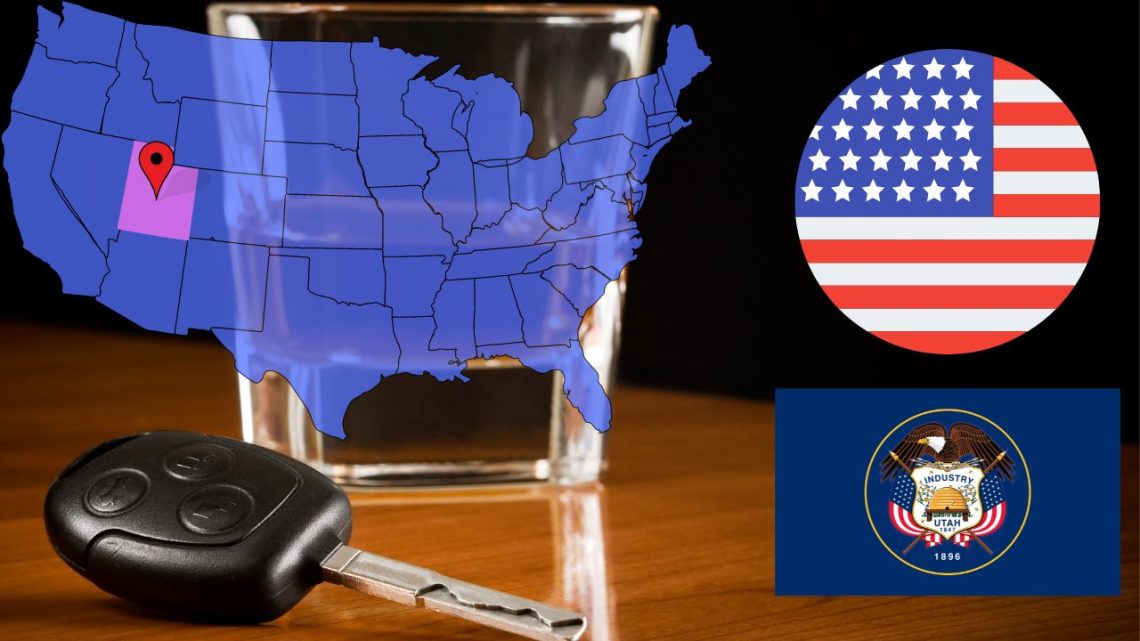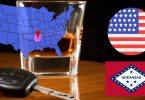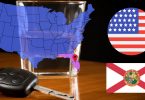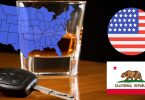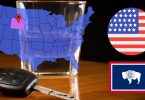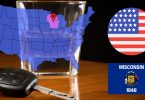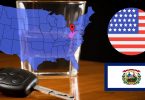In Utah, the maximum permissible blood alcohol content (BAC) stands at 0.05% (50 mg of alcohol per 100 mL of blood).
Please be advised that the purpose of this piece is to raise awareness about drunk driving and Utah’s impaired driving regulations. This page does not support drunk driving in any state or location.
What is the legal alcohol limit for driving in Utah?
In Utah, the legal alcohol limits for driving are determined by the driver’s license type and age, reflecting the state’s commitment to road safety. Below is a breakdown of the permissible blood alcohol content (BAC) levels for different categories of drivers:
- Regular Drivers: The legal BAC limit is 0.05% (50 mg of alcohol per 100 mL of blood), emphasizing a stringent approach to prevent impaired driving.
- Commercial Drivers: For those holding a commercial driver’s license, the BAC threshold is set at a lower level of 0.04%, recognizing the higher responsibility associated with operating commercial vehicles.
- Minors (Under 21): Utah enforces a zero-tolerance policy for underage drivers, making it illegal for minors to operate a vehicle with any detectable amount of alcohol in their system.
Drink and Drive Penalties and Punishments in Utah
In Utah, the consequences of driving under the influence (DUI) are taken very seriously, and the penalties reflect the state’s commitment to road safety. If you’re convicted of DUI in Utah, the severity of the penalties depends on several factors, including your blood alcohol content (BAC) level at the time of arrest, whether you caused bodily injury, if there was a minor in the vehicle, your driving direction, and if it’s a repeat offense. Below is a detailed breakdown of penalties and punishments for DUI offenses in Utah. Note that laws and penalties can change, so it’s important to consult the official state website for the most current information.
First Conviction:
- Class B Misdemeanor:
- Mandatory: 2 days in jail OR 48 hours of compensatory service.
- May suspend jail time if participating in a 24/7 sobriety program.
- Minimum $700 fine, $630 surcharge, and a $60 court security fee.
- Mandatory screening, assessment, educational series, and possible treatment.
- Supervised probation and ignition interlock system installation may be ordered.
For Cases Involving:
- Bodily injury.
- Passenger under 16.
- Passenger under 18 and driver 21 or older.
- Driving in the wrong direction on a freeway or controlled-access highway.
Enhanced Penalties for:
- BAC of .16 or higher.
- BAC of .05 or higher with any measurable controlled substance.
- Combination of two or more controlled substances.
Enhanced Consequences Include:
- Not less than 5 days in jail OR 2 days AND 30 days of electronic home confinement with substance abuse testing.
- Additional potential orders for treatment, ignition interlock, and other monitoring devices.
Second Conviction Within 10 Years:
- Increased jail time and fines.
- Mandatory longer periods of electronic home confinement.
- Higher minimum fines and surcharges.
- Similar mandatory and discretionary orders for treatment, educational programs, and monitoring devices.
Special Considerations:
- For drivers under 21, an ignition interlock device is mandatory.
- The court may order additional penalties, including extended probation, monitoring devices, or enhanced confinement, depending on the specific circumstances of the offense.
Driver License Denial, Suspension, or Revocation:
- First Offense:
- 21 or older: 120 days
- 19-20 years: Longer of one year or until 21st birthday
- Under 19: Until 21st birthday
- Second or Subsequent Offenses within 10 Years:
- 21 or older: 2 years
- 19-20 years: Longer of 2 years or until 21st birthday
- Under 19: Until 21st birthday
Driving with Controlled Substance/Metabolite in Body Conviction:
- Similar suspension periods as DUI convictions for both first offenses and subsequent offenses within 10 years.
Refusal of Chemical Test:
- First Offense:
- 21 or older: 18 months
- Under 21: Longer of 2 years or until 21st birthday
- Second or Subsequent Offenses:
- 21 or older: 36 months
- Under 21: Longer of 36 months or until 21st birthday
Per se Arrest:
- First Offense:
- 21 or older: 120 days
- Under 21: 6 months
- Second or Subsequent Offenses:
- 21 or older: 2 years
- Under 21: Longer of 2 years or until 21st birthday
Not A Drop (for drivers under 21):
- Suspension until successful completion of a substance abuse program, with minimum periods depending on the offense.
Failure to Install or Removal of Ignition Interlock Device:
- Suspension until an interlock device is installed or re-installed, in addition to other license sanctions.
Early License Reinstatement:
- Provisions for early reinstatement after a DUI conviction include completing a screening, assessment, education series or substance abuse treatment, and compliance with all probation terms or court orders.
Other Sanctions:
- Interlock Restricted Driver (IRD) and Alcohol Restricted Driver (ARD) designations impose further restrictions on drivers convicted of DUI offenses, with varying periods of restriction based on the nature of the offense and any prior convictions.
How Can I Calculate if My Alcohol Blood Limit Is Legal in Utah?
Understanding and adhering to Utah’s legal alcohol limit is crucial for safe driving. The state’s law enforcement agencies employ various methods to determine a driver’s blood alcohol content (BAC), ensuring that those on the road are within the legal limits. Here’s an overview of how police identify BAC levels in Utah and two recommended methods for checking your own BAC levels.
Two Ways to Check Your BAC Level
As a former phlebotomist with extensive experience, I recommend the following methods for estimating your BAC level:
- Use a High-Quality Alcohol Breathalyzer:
- The BACtrack S80 is a standout option available in Utah, known for its professional-grade accuracy. It is DOT & NHTSA approved and FDA 510(k) cleared, making it a reliable choice for personal use. Keeping a BACtrack S80 in your vehicle can be a practical way to self-assess your BAC, potentially preventing you from driving impaired. It’s important for drivers in Utah to recognize that it’s easy to misjudge one’s own BAC level, and having a breathalyzer on hand can provide valuable insight into your level of impairment.
- Use a BAC Calculator:
- Together with fellow phlebotomists and web developers, I’ve developed a BAC calculator, which is accessible online. This tool takes into account factors such as your weight, the type and amount of alcohol consumed, and the time elapsed since drinking. While not as direct as a breathalyzer, it can offer an estimation of your BAC level based on the input data.
Important Considerations
It’s vital to understand that both methods—using a breathalyzer and a BAC calculator—cannot guarantee 100% accuracy. Various factors, including metabolism rates, food intake, and individual health conditions, can influence the results. However, these tools can provide a valuable reference point and help you make informed decisions about driving after consuming alcohol.
Given the strict DUI laws in Utah, especially with the legal limit set at 0.05% for most drivers, erring on the side of caution is wise. If there’s any doubt about your sobriety, the safest choice is to not drive. Remember, these tools are meant to assist in your decision-making process, not to serve as a definitive measure of legality or safety.
Ways to Avoid Driving with a High BAC in Utah
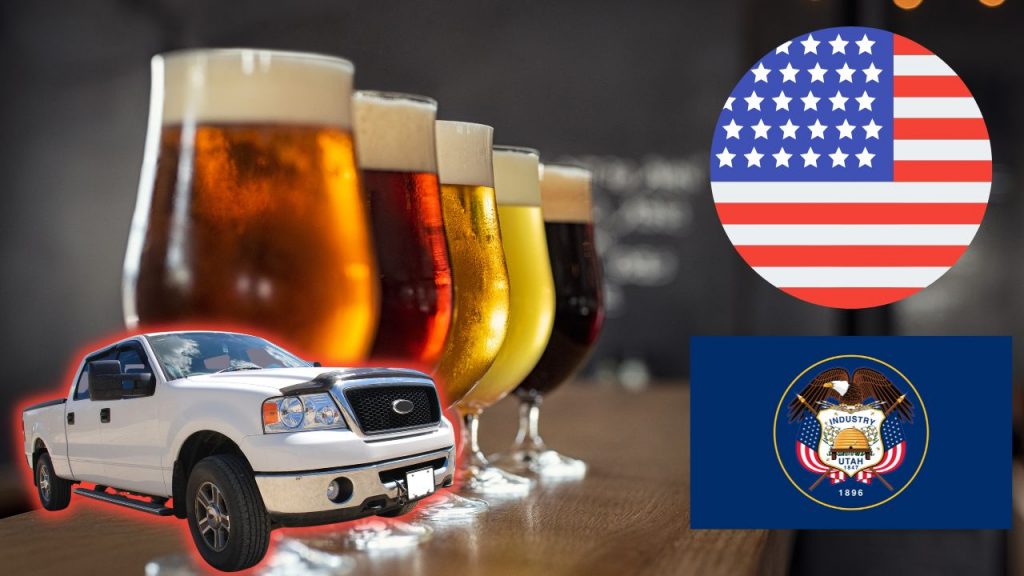
Driving with a high Blood Alcohol Content (BAC) is not only illegal in Utah but also poses significant risks to yourself and others on the road. Fortunately, there are convenient and responsible alternatives to driving under the influence. Here are some effective strategies for avoiding driving with a high BAC in Utah:
1. Utilize Ridesharing Apps or Local Taxi Services
One of the simplest ways to avoid driving after drinking is to use ridesharing apps like Uber or Lyft. These apps offer a convenient, safe, and accessible means to get home without risking DUI charges or, more importantly, your life and the lives of others. Additionally, for those who prefer traditional taxi services, Salt Lake City and its surrounding areas offer reliable options such as Airport Shuttle SLC – AAA Airport Transportation or Utah Express LLC in West Valley City. These local taxi companies provide a safe ride home and help eliminate the temptation to drive after drinking.
2. Order a Designated Driver Service
If you find yourself in a situation where you’ve driven to a location and consumed alcohol, leaving your car behind might not feel like an option. This is where designated driver services come into play. Companies like Utah Private Ride in Salt Lake City and Driver.com in West Valley City offer services where a professional driver takes you home in your own vehicle. This way, you avoid leaving your car unattended and ensure both you and your vehicle arrive home safely. To find a designated driver service near you, a quick Google search for “designated driver service” along with your city’s name should provide several options.
By taking advantage of these services, you can enjoy your social outings without compromising on safety. Remember, the goal is to ensure that everyone has a safe way home, thereby reducing the risks associated with driving under the influence in Utah.
Sticking to DUI Laws in Utah: Sad Statistics
In 2017, Utah’s governor enacted legislation lowering the legal blood alcohol concentration (BAC) limit from 0.08% to 0.05%, a change that took effect on December 30, 2018. This adjustment has contributed to a decrease in fatal vehicle accidents and alcohol-related crashes in the state, as evidenced by data from the National Highway Traffic Safety Administration (NHTSA).
In 2020, 21% of Utah’s 276 fatal accidents involved drivers with a BAC above 0.08%. To avoid the risks of drunk driving, options like Uber, designated driver services, or taxis should be considered. Utah’s stringent DUI laws aim to minimize drunk driving accidents, emphasizing the importance of adhering to these regulations and checking your BAC level before driving. For detailed information on DUI limits and regulations, refer to Utah’s official website and always prioritize safety by avoiding driving after consuming alcohol.

